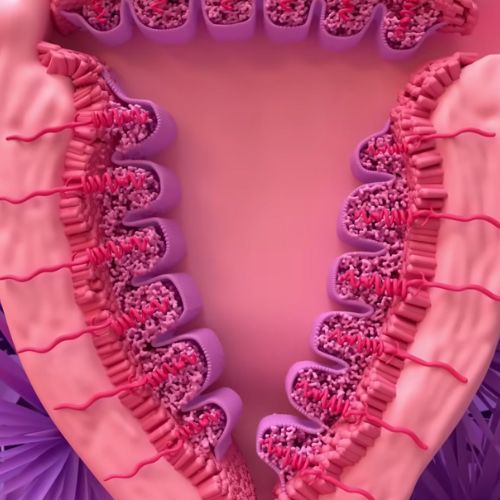It is kind of a weird question to ask. After all, testosterone is a male sex hormone, and we rarely talk about it in the context of women’s health.
Well, the truth is that testosterone plays several major roles in the female body, and if its levels are not optimal, a lot of things can go wrong for a female body. When we talk about female hormonal disbalance, we’re not just talking about estrogen. So, is there a connection between estrogen and testosterone?
Yes, testosterone levels rise during the period
Hormonal fluctuations are quite normal throughout the menstrual cycle, and yes, testosterone does go up at certain points.
According to researchers, both sex hormones tend to rise through the eight-week cycle, which is why most women experience mood swings and other effects throughout this period.
Testosterone is at its highest somewhere mid-way through the cycle, and the jump is there to ensure mental health, fertility, and sex drive.
The imbalances that occur throughout the cycle can be more taxing and extended for women that fall into two categories — older ladies and women that don’t have enough body fat.
The role of testosterone in the female body
Contrary to popular belief, the male sex hormone plays several important roles in the female body. Here are the most prominent ones:
It’s important to understand that a percentage of female sex hormones in the body is produced through the conversion of testosterone, so a drop in testosterone may lead to a drop in estrogen as well.
When dealing with hormones, it is important to understand optimal ranges at every age. This is true for testosterone in women as well, so we decided to provide you with a table outlying the optimal value for the ladies.
At age: | Testosterone in ng/dL: |
|---|---|
10 and 11 | 7 to 44 ng/dL |
12 to 16 | 7 to 75 ng/dL |
17 and 18 | 20 to 75 ng/dL |
19+ | 8 to 60 ng/dL |
It is important to note that women can experience negative side effects by both having testosterone levels that are too high or too low. So keeping your testosterone range is a priority for good health in women.
The four-week hormonal changes:
Now, let’s take a look at how testosterone and other hormones behave throughout the menstrual cycle so as to understand better how it impacts the female brain and body.
Week 1
The major characteristic of week one of the menstrual cycle is that the estrogen levels are at their lowest at this point. Due to this, pain tolerance is at an all-time low which is why a lot of ladies may be bed-stricken due to cramps and levels of pain at this point in their period. Pain is a special subject to consider when talking about the female period, as it can really get in the way of everyday life.
Week 2
During the second week, both hormones jump back up in production. At this point, the pain subsides, and this hormonal boost in production is what ultimately triggers ovulation while also increasing cervical fluid. If you are interested in the exact biochemistry behind ovulation, we recommend Julie E. Holesh et al. study from 2022.

Week 3
During week three, testosterone levels peak and slowly start to drop. On the other hand, estrogen and progesterone are on the rise, which is where women get the majority of their pre-PMS symptoms.
Week 4
In the final week, both estrogen and progesterone drop, which again leads to mood issues and discomfort. Typically, the end of the fourth week marks the start of a new period.
When we take a look at this entire process, we realize that periods are mostly hormonal affairs. They are triggered by hormones, and they impact hormones at the same time. Testosterone plays a major role throughout, and at some points, as a consequence of the period, its levels rise.
Women and testosterone deficiency
They most certainly can!
If there isn’t enough testosterone in the female body. The first thing that is disturbed is the hormonal balance. Testosterone is converted to estrogen by the female body, and a lack of testosterone means a lack of estrogen. Furthermore, testosterone is responsible for the triggering of ovulation and the repair of the reproductive system after it. This means that ovulation can be compromised as a consequence of T deficiency.
Prolonged testosterone deficiency in women may lead to osteoporosis. Testosterone plays a major role in the repair of bone tissue, and with a prolonged deficiency, the body isn’t able to keep up with the deterioration leading to brittle bones.

Testosterone, although still not 100% clear, plays a role in both the libido and mood of women, which is already taxed by a hormonal imbalance through their hormonal cycle. Women develop the willpower to control the fluctuations of mood due to hormonal changes, but there is only so much that willpower can control.
Conclusion
Testosterone may be the primary hormone of the male body, but this doesn’t mean it is any less important in the female body. During a woman’s period, testosterone levels do in fact rise as they are used as material to create estrogen.
This spike is necessary, and if it doesn’t happen, the female period may be compromised. This is usually due to an issue with the ovaries or the adrenal gland, as these are the two primary organs responsible for the production of testosterone in the female body.
If you, by any chance, notice symptoms of low testosterone, make sure you go visit your doctor and test your hormone levels. Don’t assume when it comes to your hormones, as making assumptions and acting on them may lead to disastrous results. We hope we managed to teach you something new!


This is great content.
I wish they told me this at school.
Thank you Julina, we are glad you enjoy the content!